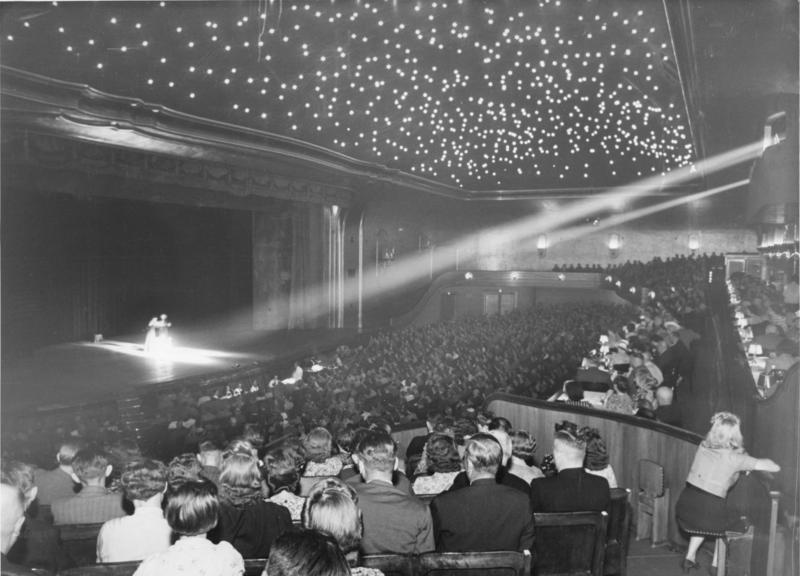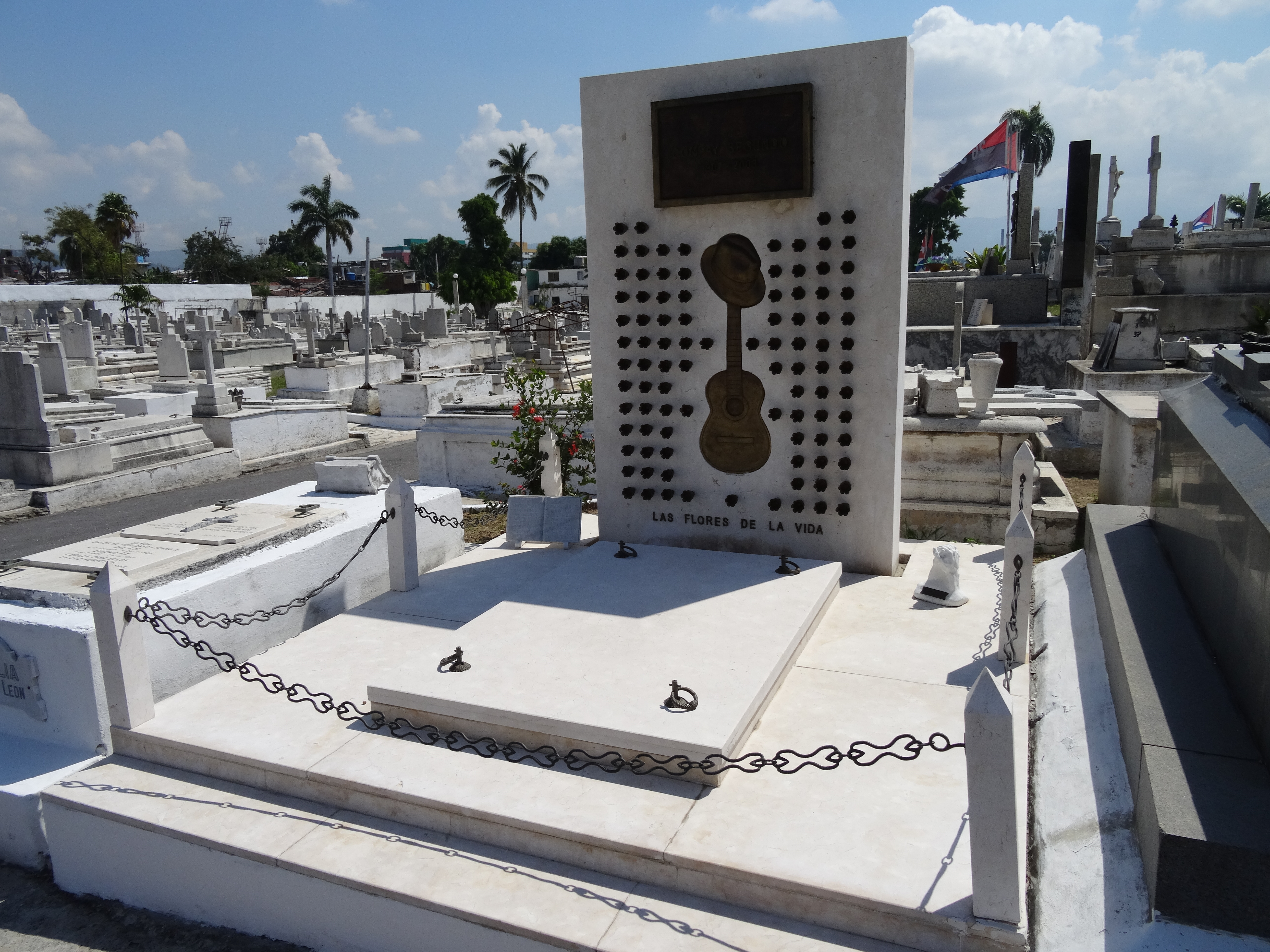|
Buena Vista Social Club (film)
''Buena Vista Social Club'' is a 1999 documentary film directed by Wim Wenders about the music of Cuba. It is named for a danzón that became the title piece of the album ''Buena Vista Social Club''. The film is an international co-production of Germany, the United States, the United Kingdom, France, and Cuba. In 2020, the film was selected for preservation in the United States National Film Registry by the Library of Congress as being "culturally, historically or aesthetically significant. Content The film documents how Ry Cooder, long-time friend of Wenders, brought together the ensemble of legendary Cuban musicians to record an album (also called ''Buena Vista Social Club'') and to perform two times with a full line-up: in April 1998 in Amsterdam (two nights) and the 1st of July 1998 in the United States (at the Carnegie Hall, New York City). Although they are geographically close, travel between Cuba and the United States is restricted due to the political tension between t ... [...More Info...] [...Related Items...] OR: [Wikipedia] [Google] [Baidu] |
Wim Wenders
Ernst Wilhelm "Wim" Wenders (; born 14 August 1945) is a German filmmaker, playwright, author, and photographer. He is a major figure in New German Cinema. Among many honors, he has received three nominations for the Academy Award for Best Documentary Feature: for ''Buena Vista Social Club'' (1999), about Cuban music culture; ''Pina'' (2011), about the contemporary dance choreographer Pina Bausch; and '' The Salt of the Earth'' (2014), about Brazilian photographer Sebastião Salgado. One of Wenders's earliest honors was a win for the BAFTA Award for Best Direction for his narrative drama ''Paris, Texas'' (1984), which also won the Palme d'Or at the 1984 Cannes Film Festival. Many of his subsequent films have also been recognized at Cannes, including ''Wings of Desire'' (1987), for which he won the Best Director Award at the 1987 Cannes Film Festival. Wenders has been the president of the European Film Academy in Berlin since 1996. Alongside filmmaking, he is an active photogr ... [...More Info...] [...Related Items...] OR: [Wikipedia] [Google] [Baidu] |
Cinema Of Germany
The film industry in Germany can be traced back to the late 19th century. German cinema made major technical and artistic contributions to early film, broadcasting and television technology. Babelsberg Studio, Babelsberg became a household synonym for the early 20th century film industry in Europe, similar to Hollywood later. Germany witnessed major changes to its identity during the 20th and 21st century. Those changes determined the periodisation of national cinema into a succession of distinct eras and movements. History 1895–1918 German Empire The history of cinema in Germany can be traced back to the years shortly after the medium's birth. On 1 November 1895, Max Skladanowsky and his brother Emil demonstrated their self-invented movie projector, film projector, the Bioscop, at the Berlin Wintergarten theatre, Wintergarten music hall in Berlin. A 15-minute series of eight short films were shown – the first screening of films to a paying audience. This performance pre ... [...More Info...] [...Related Items...] OR: [Wikipedia] [Google] [Baidu] |
Compay Segundo
Máximo Francisco Repilado Muñoz Telles (18 November 1907 – 13 July 2003), known professionally as "Compay Segundo", was a Cuban trova guitarist, singer and composer. Biography Compay (meaning ''compadre'') Segundo, so called because he was always second voice in his musical partnerships, was born in Siboney, Cuba, and moved to Santiago de Cuba at the age of nine. His first engagement was in the Municipal Band of Santiago de Cuba, directed by his teacher, Enrique Bueno. In 1934, after a spell in a quintet, he moved to Havana, where he also played the clarinet in the Municipal Band. He also learned to play the guitar and the tres, which became his usual instruments. Compay Segundo also invented the armónico, a seven-stringed guitar-like instrument, to fill the harmonic jump between the Spanish guitar and the tres."Compay Segundo" [...More Info...] [...Related Items...] OR: [Wikipedia] [Google] [Baidu] |
New York City
New York, often called New York City or NYC, is the List of United States cities by population, most populous city in the United States. With a 2020 population of 8,804,190 distributed over , New York City is also the List of United States cities by population density, most densely populated major city in the United States, and is more than twice as populous as second-place Los Angeles. New York City lies at the southern tip of New York (state), New York State, and constitutes the geographical and demographic center of both the Northeast megalopolis and the New York metropolitan area, the largest metropolitan area in the world by urban area, urban landmass. With over 20.1 million people in its metropolitan statistical area and 23.5 million in its combined statistical area as of 2020, New York is one of the world's most populous Megacity, megacities, and over 58 million people live within of the city. New York City is a global city, global Culture of New ... [...More Info...] [...Related Items...] OR: [Wikipedia] [Google] [Baidu] |
Carnegie Hall
Carnegie Hall ( ) is a concert venue in Midtown Manhattan in New York City. It is at 881 Seventh Avenue (Manhattan), Seventh Avenue, occupying the east side of Seventh Avenue between West 56th Street (Manhattan), 56th and 57th Street (Manhattan), 57th Streets. Designed by architect William Burnet Tuthill and built by philanthropist Andrew Carnegie, it is one of the most prestigious venues in the world for both classical music and popular music. Carnegie Hall has its own artistic programming, development, and marketing departments and presents about 250 performances each season. It is also rented out to performing groups. Carnegie Hall has 3,671 seats, divided among three auditoriums. The largest one is the Stern Auditorium, a five-story auditorium with 2,804 seats. Also part of the complex are the 599-seat Zankel Hall on Seventh Avenue, as well as the 268-seat Joan and Sanford I. Weill Recital Hall on 57th Street. Besides the auditoriums, Carnegie Hall contains offices on its t ... [...More Info...] [...Related Items...] OR: [Wikipedia] [Google] [Baidu] |
United States
The United States of America (U.S.A. or USA), commonly known as the United States (U.S. or US) or America, is a country primarily located in North America. It consists of 50 states, a federal district, five major unincorporated territories, nine Minor Outlying Islands, and 326 Indian reservations. The United States is also in free association with three Pacific Island sovereign states: the Federated States of Micronesia, the Marshall Islands, and the Republic of Palau. It is the world's third-largest country by both land and total area. It shares land borders with Canada to its north and with Mexico to its south and has maritime borders with the Bahamas, Cuba, Russia, and other nations. With a population of over 333 million, it is the most populous country in the Americas and the third most populous in the world. The national capital of the United States is Washington, D.C. and its most populous city and principal financial center is New York City. Paleo-Americ ... [...More Info...] [...Related Items...] OR: [Wikipedia] [Google] [Baidu] |
Amsterdam
Amsterdam ( , , , lit. ''The Dam on the River Amstel'') is the Capital of the Netherlands, capital and Municipalities of the Netherlands, most populous city of the Netherlands, with The Hague being the seat of government. It has a population of 907,976 within the city proper, 1,558,755 in the City Region of Amsterdam, urban area and 2,480,394 in the Amsterdam metropolitan area, metropolitan area. Located in the Provinces of the Netherlands, Dutch province of North Holland, Amsterdam is colloquially referred to as the "Venice of the North", for its large number of canals, now designated a World Heritage Site, UNESCO World Heritage Site. Amsterdam was founded at the mouth of the Amstel River that was dammed to control flooding; the city's name derives from the Amstel dam. Originally a small fishing village in the late 12th century, Amsterdam became a major world port during the Dutch Golden Age of the 17th century, when the Netherlands was an economic powerhouse. Amsterdam is th ... [...More Info...] [...Related Items...] OR: [Wikipedia] [Google] [Baidu] |
Cuba
Cuba ( , ), officially the Republic of Cuba ( es, República de Cuba, links=no ), is an island country comprising the island of Cuba, as well as Isla de la Juventud and several minor archipelagos. Cuba is located where the northern Caribbean Sea, Gulf of Mexico, and Atlantic Ocean meet. Cuba is located east of the Yucatán Peninsula (Mexico), south of both the American state of Florida and the Bahamas, west of Hispaniola ( Haiti/Dominican Republic), and north of both Jamaica and the Cayman Islands. Havana is the largest city and capital; other major cities include Santiago de Cuba and Camagüey. The official area of the Republic of Cuba is (without the territorial waters) but a total of 350,730 km² (135,418 sq mi) including the exclusive economic zone. Cuba is the second-most populous country in the Caribbean after Haiti, with over 11 million inhabitants. The territory that is now Cuba was inhabited by the Ciboney people from the 4th millennium BC with the Gua ... [...More Info...] [...Related Items...] OR: [Wikipedia] [Google] [Baidu] |
Ry Cooder
Ryland Peter "Ry" Cooder (born March 15, 1947) is an American musician, songwriter, film score composer, record producer, and writer. He is a multi-instrumentalist but is best known for his slide guitar work, his interest in traditional music, and his collaborations with traditional musicians from many countries. Cooder's solo work draws upon many genres. He has played with John Lee Hooker, Captain Beefheart, Taj Mahal, Gordon Lightfoot, Ali Farka Touré, Eric Clapton, The Rolling Stones, Van Morrison, Neil Young, Randy Newman, Linda Ronstadt, Vishwa Mohan Bhatt, David Lindley, The Chieftains, The Doobie Brothers, and Carla Olson and The Textones (on record and film). He formed the band Little Village, and produced the album ''Buena Vista Social Club'' (1997), which became a worldwide hit; Wim Wenders directed the documentary film of the same name (1999), which was nominated for an Academy Award in 2000. Cooder was ranked at No. 8 on ''Rolling Stone'' magazine's 2003 list ... [...More Info...] [...Related Items...] OR: [Wikipedia] [Google] [Baidu] |
Library Of Congress
The Library of Congress (LOC) is the research library that officially serves the United States Congress and is the ''de facto'' national library of the United States. It is the oldest federal cultural institution in the country. The library is housed in three buildings on Capitol Hill in Washington, D.C.; it also maintains a conservation center in Culpeper, Virginia. The library's functions are overseen by the Librarian of Congress, and its buildings are maintained by the Architect of the Capitol. The Library of Congress is one of the largest libraries in the world. Its "collections are universal, not limited by subject, format, or national boundary, and include research materials from all parts of the world and in more than 470 languages." Congress moved to Washington, D.C., in 1800 after holding sessions for eleven years in the temporary national capitals in New York City and Philadelphia. In both cities, members of the U.S. Congress had access to the sizable collection ... [...More Info...] [...Related Items...] OR: [Wikipedia] [Google] [Baidu] |
National Film Registry
The National Film Registry (NFR) is the United States National Film Preservation Board's (NFPB) collection of films selected for preservation, each selected for its historical, cultural and aesthetic contributions since the NFPB’s inception in 1988. History Through the 1980s, several prominent filmmakers and industry personalities in the United States, such as Frank Capra and Martin Scorsese, advocated for Congress to enact a film preservation bill in order to avoid commercial modifications (such as pan and scan and editing for TV) of classic films, which they saw as negative. In response to the controversy over the colorization of originally black and white films in the decade specifically, Representatives Robert J. Mrazek and Sidney R. Yates introduced the National Film Preservation Act of 1988, which established the National Film Registry, its purpose, and the criteria for selecting films for preservation. The Act was passed and the NFR's mission was subsequently reau ... [...More Info...] [...Related Items...] OR: [Wikipedia] [Google] [Baidu] |
Cinema Of Cuba
Cinema arrived in Cuba at the beginning of the 20th century. Before the Cuban Revolution of 1959, about 80 full-length films were produced in Cuba. Most of these films were melodramas. Following the revolution, Cuba entered what is considered the "Golden age" of Cuban cinema. Early stages After being popularised by the brothers Louis Jean and Auguste Marie Lumière, the cinematographe traveled through several capital cities in different American countries before arriving in Havana, which occurred on January 24, 1897. It was brought from Mexico by Gabriel Veyre. The first presentation was offered at Paseo del Prado #126, just aside the Teatro Tacón. Four short films were shown: ''Partida de cartas'', ''El tren'', ''El regador y el muchacho'' y ''El sombrero cómico''. The tickets were sold at a price of 50 cents, and 20 cents for kids and the military. Short after, Veyre performed a leading role in the first film produced in the island, ''Simulacro de incendio'', a documentary ... [...More Info...] [...Related Items...] OR: [Wikipedia] [Google] [Baidu] |





.jpg)
.jpg)
